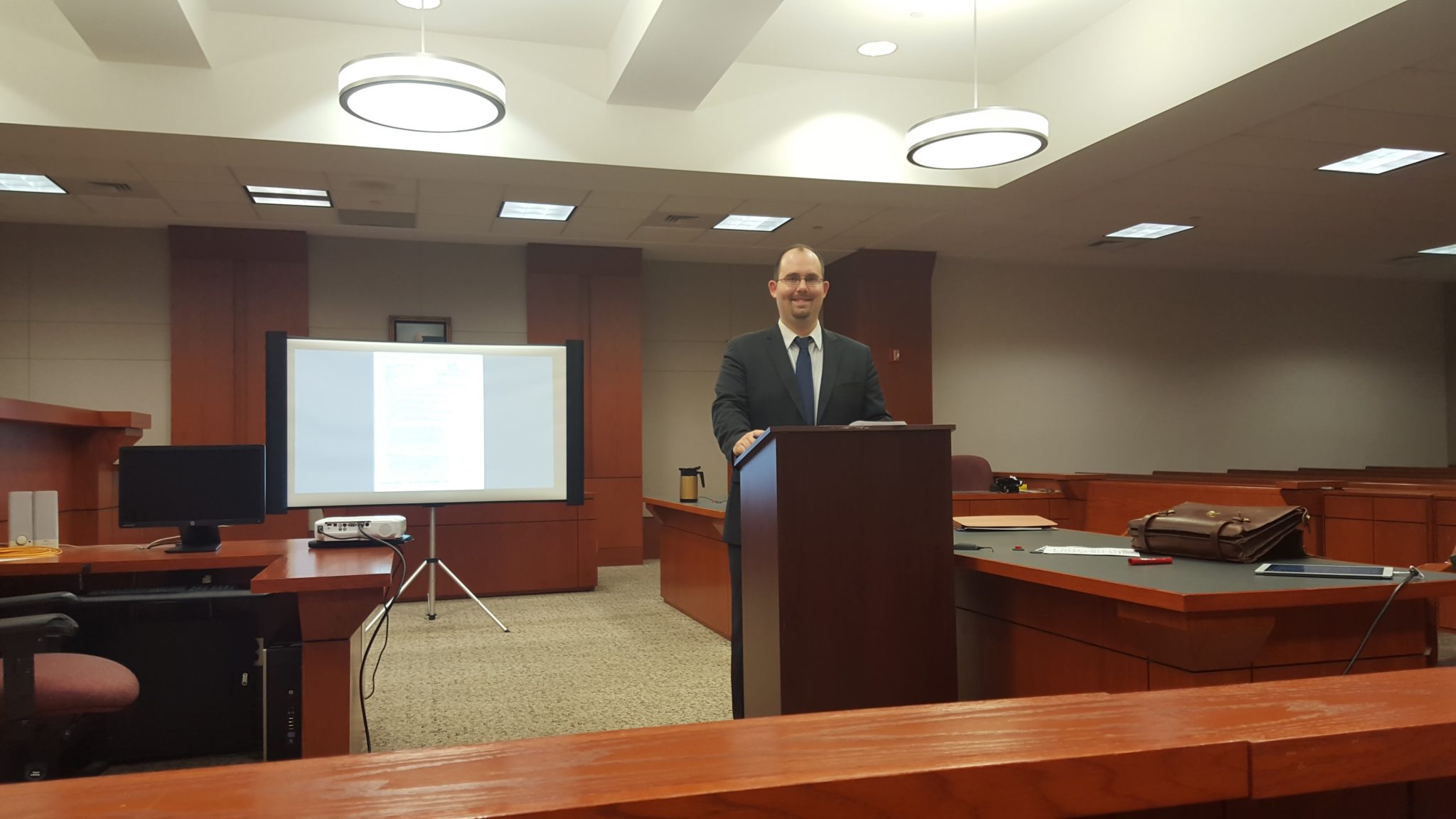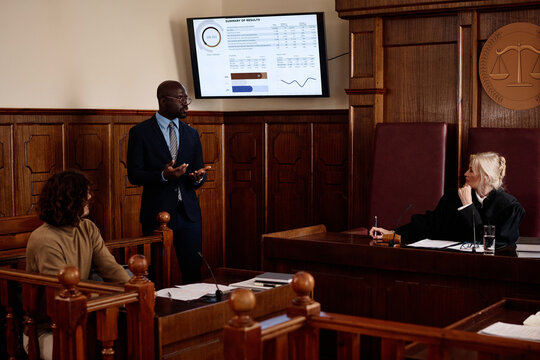Browsing the Complexities of Test Presentations: Tips for Seamless Shipment and Engaging Disagreements
In the world of lawful procedures, the art of trial discussion stands as an important factor of success. The intricacies fundamental in test presentations call for a delicate equilibrium of finesse, method, and ability.

Recognizing Trial Goals
To efficiently navigate a trial, it is critical to have a clear understanding of the objectives that require to be accomplished. Prior to stepping into the court, lawful groups need to specify their goals and preferred results. These purposes act as assisting principles throughout the test, forming methods and affecting decision-making processes.
Understanding trial goals involves a thorough evaluation of the case, legal criteria, and the customer's finest interests. Trial Presentations. It calls for a meticulous exam of the facts, identifying crucial problems, and expecting potential obstacles. By establishing certain and quantifiable goals, attorneys can customize their presentations and arguments to line up with the preferred outcomes
Furthermore, a clear understanding of test goals enables legal teams to focus on evidence, witnesses, and legal disagreements properly. It permits the advancement of a systematic story that resonates with the judge and court, strengthening the general instance presentation.

Organizing Evidence Successfully
Having a clear understanding of test purposes lays the structure for arranging proof successfully in lawful process. By straightening the presentation of evidence with the desired outcomes of the test, lawful groups can reinforce their arguments and boost their persuasiveness.
One more crucial element in organizing evidence efficiently is establishing a logical flow. Offering evidence in a sequential and meaningful way can help build a compelling story that supports the legal debates being made. In addition, utilizing visual aids such as charts, timelines, or charts can even more enhance the company of proof and aid in clarifying complex relationships or sequences of events.
Furthermore, making sure that all proof presented is acceptable and pertinent to the situation is vital. Unimportant or inadmissible proof can take away from the stamina of the disagreement and possibly damage the trustworthiness of the offering celebration. A thorough evaluation and option procedure need to be taken on to include only the most impactful and legally sound proof in the test discussion.
Crafting Convincing Stories
Crafting compelling narratives plays a critical duty in providing persuasive debates during legal procedures. When building a story for a test presentation, it is important to develop a clear storyline that highlights vital points and attaches them in a coherent manner. By weaving with each other proof, testament, and legal debates right into a persuasive and natural narrative, lawful professionals can successfully support for their clients and enhance the possibility of a positive result in the courtroom.
Grasping Aesthetic Aids
Effective use of aesthetic help is crucial to boosting the influence and quality of trial presentations. Visual aids, when utilized tactically, have the power to simplify intricate details, strengthen bottom lines, and leave a long lasting perception on the discretionary. To grasp visual help in trial discussions, it is vital to make sure that they are clear, succinct, and relevant to the arguments being made.
When integrating aesthetic help, such as charts, pictures, timelines, or graphs, into a test presentation, it is important to keep them aesthetically appealing yet expert. The visuals should match the verbal disagreements, giving a visual representation official website of the info being gone over without frustrating the audience with unneeded information.
Additionally, exercising with the aesthetic aids in advance is necessary to make sure a smooth distribution throughout the trial. Acquainting oneself with the material, transitions, and timings of each aesthetic aid can assist preserve the flow of the discussion and protect against technical glitches that might arise.
Supplying Impactful Closing Arguments
An engaging closing argument offers as the conclusion of a test discussion, encapsulating the core story and persuading the judge and jury in the direction of a desirable decision. Begin by describing the major arguments that sustain your client's placement, emphasizing why the evidence presented throughout the test supports your story.
Additionally, integrating psychological appeal can even More Help more reinforce your closing debate. Inevitably, a well-crafted closing disagreement should leave a long-term perception, compelling the judge and jury to rule in your client's support.
Final Thought
To conclude, mastering trial presentations includes comprehending objectives, organizing evidence, crafting stories, making use of aesthetic aids, and delivering impactful closing disagreements. By applying these approaches effectively, attorneys can provide their case flawlessly and make compelling debates in the courtroom. It is vital to navigate the complexities of trial discussions with precision and skill to attain success in lawful procedures.
By lining up the presentation of proof with the preferred results of like this the trial, lawful groups can reinforce their arguments and improve their persuasiveness (Trial Presentations). To master visual help in test discussions, it is critical to ensure that they are clear, concise, and pertinent to the disagreements being made
A compelling closing disagreement serves as the conclusion of a test presentation, enveloping the core narrative and convincing the court and court in the direction of a favorable choice. Begin by detailing the main arguments that sustain your client's placement, emphasizing why the evidence provided throughout the test sustains your story.In verdict, mastering test presentations entails comprehending purposes, organizing proof, crafting narratives, making use of visual help, and delivering impactful closing disagreements.